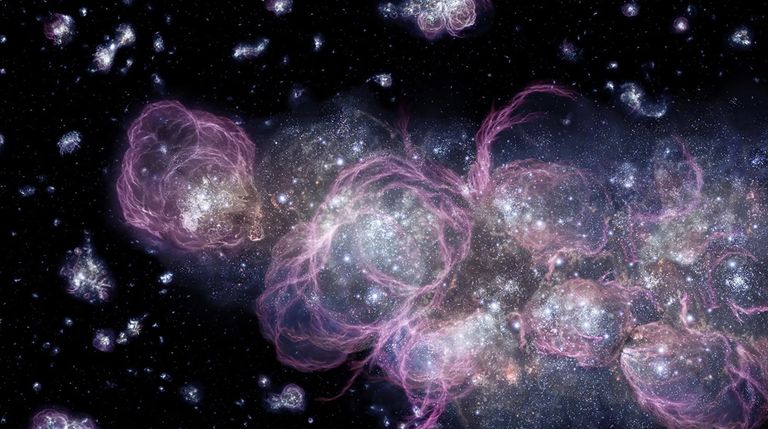When everything in the universe changed ….

The revolutionary James Webb Space Telescope and next-gen radio telescopes are probing what’s known as the epoch of reionization.
It holds clues to the first stars and galaxies, and perhaps the nature of dark matter.
For millions of years following the Big Bang, after the universe’s roiling soup of particles had cooled, the cosmos was a dark and boring place. There were no stars to make light. No familiar swirls of galaxies. Certainly no planets. And the entire universe was shrouded in neutral hydrogen gas.
Then, perhaps 100 million years or so in, everything started to change. Over the next billion-odd years, the universe went from a bland, unimpressive landscape to a rich and dynamic one.
This profound shift began when the first stars lit up. As they burned, generating heat and forging new matter, their intense light began tearing apart the hydrogen that pervaded the universe.
Everywhere electrons were ripped from these atoms, leaving the bulk of hydrogen — the most abundant element in the universe — in the ionized state it remains in today.
Source: https://www.popsci.com/science/when-everything-in-the-universe-changed/
Post received 2 votes this week and will get additional reward from this comment. You want to know more? Read in your language: 🇵🇱 Pl 🇬🇧 En 🇩🇪 De 🇪🇸 Es
📋 Posts ranking
Do you enjoy discussing various topics? Join the discussion forum on Blurt:
👉 Blurt Forum